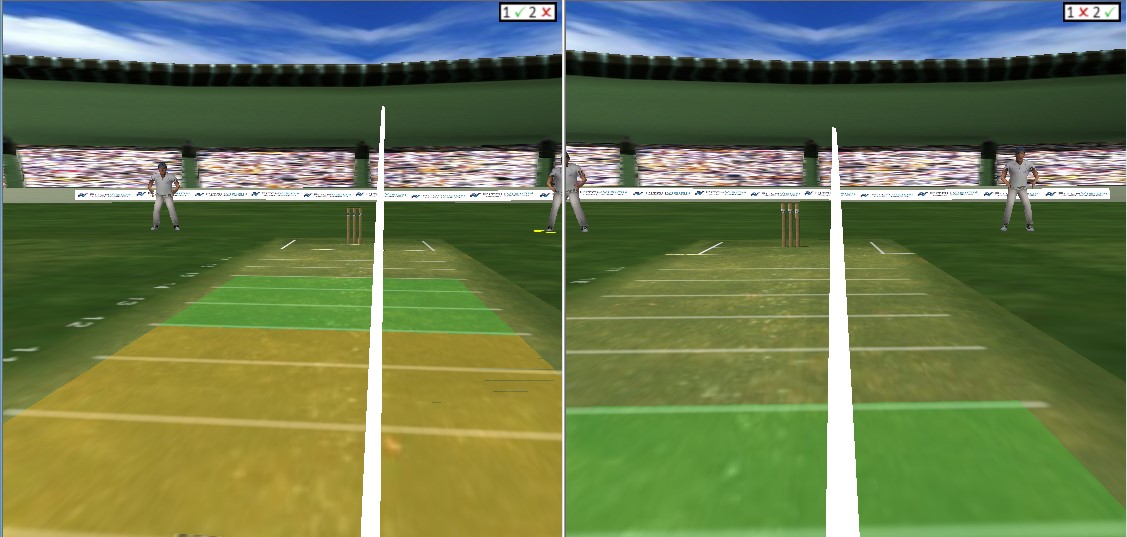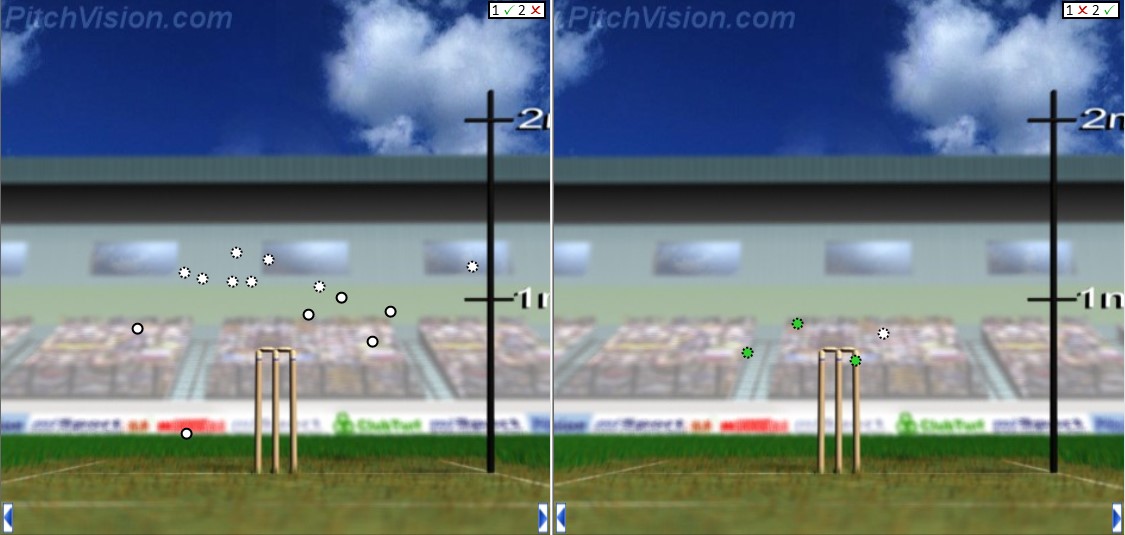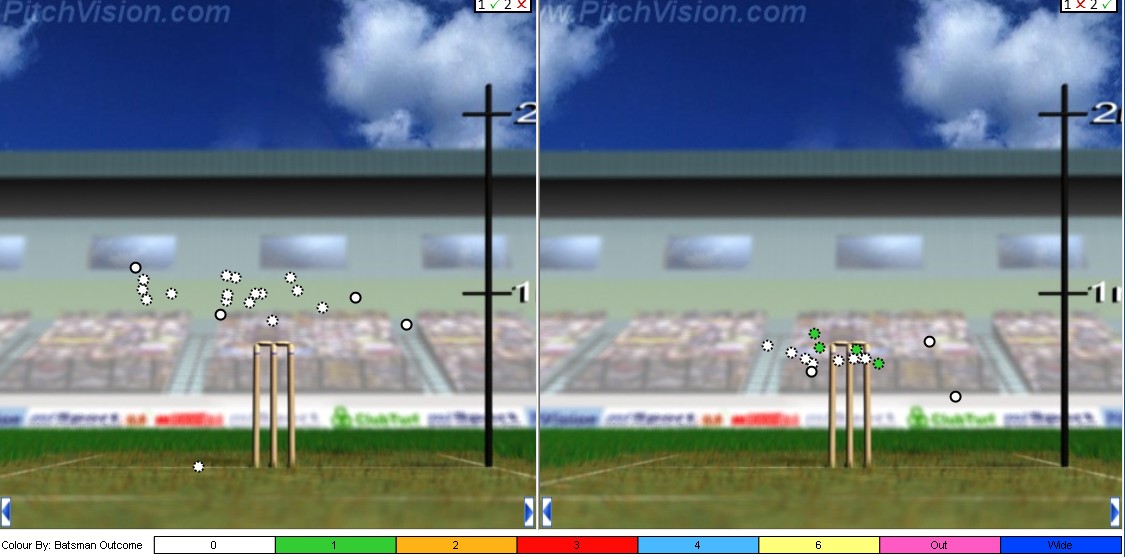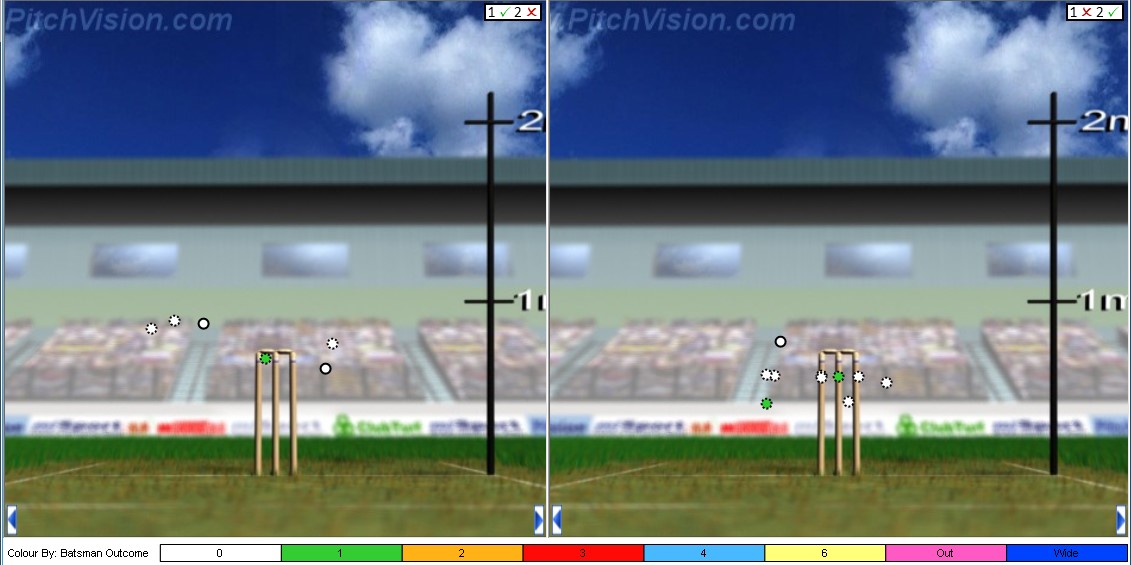|
 How much bounce a bowler gets is often ignored in cricket, but it is a crucial factor to how you bowl and how you face different types of bowlers. How much bounce a bowler gets is often ignored in cricket, but it is a crucial factor to how you bowl and how you face different types of bowlers.
In this article Waqas Zafar - cricket analyst - looks at one particular club batsman against two bowlers, who have quite a difference between the bounce they extract from the same surface.
As a result, the batter has to face different kind of challenges.
Extracting extra bounce from the same length
Using PitchVision, we can see the key information. Here is the snapshot of the point of release of the two bowlers.

We can see the difference in the heights of the release points. The one with the higher release point (on the left) extracts extra bounce off the pitch.
So, when deliveries land on the same length (6.82m) from the stumps at a minimal pace difference, the bounce difference is 0.41m.
That's a large difference and changes the batsman's approach. In the image on the right, the batsman can come forward and push the ball through the off side but on the left, he can’t prop forward to the ball which is bouncing at around 1.11m. This image illustrates the point.

Now, let's break this down and analyse them length wise and look at some of the scoring options.
Short length

On the left, 14 balls have been bowled (18% of the bowler's deliveries), six of them straying down the leg side. A couple of them are on around top of off and on fourth stump and wider.
On the right, the bowler B hasn’t quite enjoyed the leverage of extra bounce due to height factor.
I don’t feel that he’ll be looking to bowl too short. He’s bowled a total of 33 deliveries out of which only 4 have been short (12%). Here, the batsman has been slightly more proactive because there isn’t a threat of the ball climbing up to him.
Good length

On the left, the batsman’s outcome has been dot balls despite the fact that bowler has gone down the leg side and provided width at number of times too. Dot balls on around top of off and on fourth stump are understandable as there isn’t enough room to free his arms and the bounce is close to 1.00m. The batter can be in a spot of bother if the ball is put at off stump and he lunges forward at this length with the extra bounce.
We can see that no balls are the hitting the stumps.
On the right, the batsman’s outcome has been slightly better. The batter has scored when the bowler strayed on the pads and down the leg side. The batter has also scored off the balls on fourth stump. This is because the batsman likes to score off the front foot and no longer has to worry about the extra bounce. Although he should be careful of the one that keeps a little lower.
Fuller length

On the left, only one delivery is hitting the stumps and that has been picked up for a run. Two of them are going down the leg side and three are well outside off.
On the right, five deliveries are hitting the stumps, so there is a chance of getting cleaned up or trapped right in front of the stumps. The batter has also missed out on a couple of drive balls too.
Summary
- A bowler's height and release point make a difference to the amount of bounce they extract
- Higher bounce reduces batsmen's scoring options
- Lower bounce makes bowled and LBW more likely
As a result of these facts, some bowlers may feel they can adjust length depending on their tactics and the batsmen's skills. Better skilled batsmen may be challenged by higher bounce and slightly shorter length. Weaker batsmen may be challenged by fuller lengths and lower bounce. This is an areas where further analysis is needed.
This is a guest article from Waqas Zafar: video analyst, cricket enthusiast and computer scientist based in Lahore. Read more of his work by clicking here.
Discuss this article with other subscribers
|

.jpg)


.jpg)
